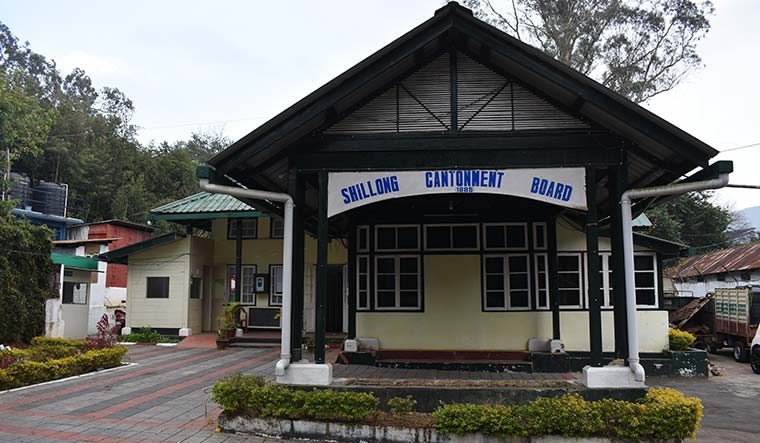Known as the ‘Scotland of the East’, Meghalaya’s capital Shillong has a distinct colonial character. It was just a small village of the Khasi tribe till 1864, when it became a British administrative centre. It was the capital of undivided Assam till Meghalaya was hived off in 1972. Shillong’s military cantonment, set up in 1885, has been the only one in the northeast. It will soon be shrunk into a military station.
The cantonment was set up away from the hustle and bustle of the administrative centre. But it is now surrounded by municipal areas and territories of the local Khasi chieftain, as per local laws.
“The first thing that strikes you upon entering town is the cantonment area, and how it intermingles with the civilian areas,” said Wing Commander (retd) Tarun Kumar Singha, who had three stints in the city from 1987 to 2018. “Unlike many other cantonments in India, the Shillong cantonment was always very open to civilian movement. There were plush bungalows on the left and right. We would always envy the owners.”
Singha has happy memories of the place. “The Garrison Ground, the fetes, the ‘melas’ where all of Shillong would congregate. Pine trees lined up, greenery in the heart of the town…. Unlike in many other places, there was less politics in the cantonment board,” he said. “But during my last visit, I saw that a lot of the cantonment’s beauty had gone, with road construction and other activities on.”
Cantonments in India were set up for various reasons. The one in Shillong was established because its invigorating climate reminded the British of Scotland. The cantonment did not have much military value, so it has remained relatively small even as others have grown in strategic importance.
Among the few military installations in Shillong, the most prominent is the military hospital. But it has fewer footfalls now, as many services have been transferred to the military hospital in Guwahati, which is easier to access for patients from neighbouring states.
The cantonment has two sections. One comprising the hospital, signal units and the National Cadet Corps office, and the other housing military barracks outside the town. “My father would talk about American troops stationed in the Shillong cantonment during World War II,” said Manas Choudhuri, who was editor of the Shillong Times for 30 years.
Few people have so closely observed Shillong’s evolution as Choudhuri has. He was born and brought up in the city, which his father made home in 1928, and was a minister. “The cantonment is now located in the heart of the town,” said Choudhuri. “Since it was not very big, it did not occupy much space in public imagination.”
Also Read
- Cantonments: Tracing its history and role in India
- Lucknow cantonment embodies melancholy beauty
- Meerut cantonment is battling surging population and encroachments
- Landour cantonment is less quaint and more crowded now
- How Deolali cantonment has retained its charm
- Delhi cantonment houses two starkly different worlds
There is not much nostalgia for it either, apparently. “Old people have mostly left, and the city is experiencing a peculiar reverse migration phenomenon because of a number of issues,” he said.
Unlike the areas housing military installations and officers’ bungalows, the cantonment’s civilian segment remains congested. Choudhuri said he had devised a master plan to address the civic issues.
“But the cantonment board never took proper care of the civilian areas within, nor did military officers show much interest in developing them. The indifference was stark,” he said. “As a result, facilities became very rudimentary. It compares very poorly with other cantonments in the country.”


